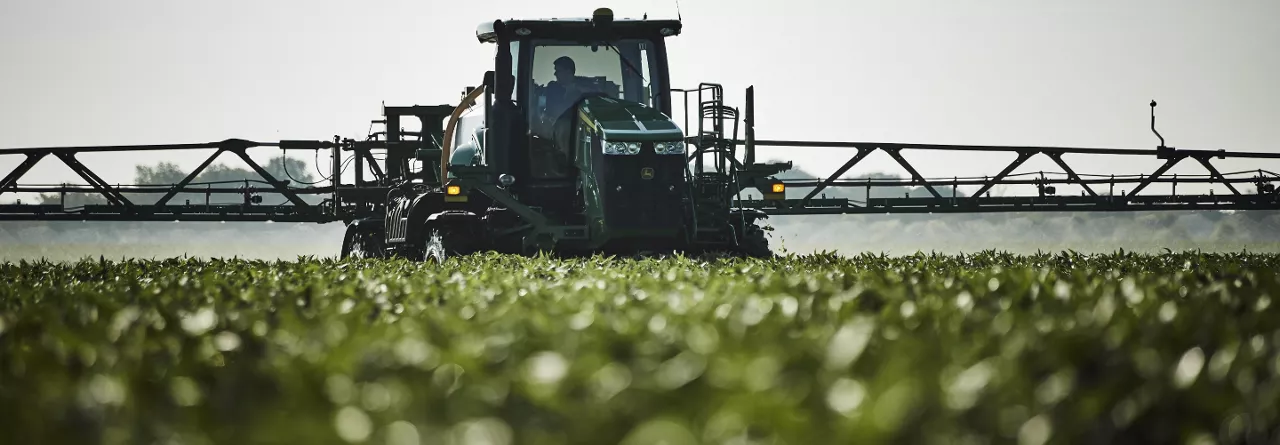
Introducing Our Latest Feature Update: Field Region Reports, Now by Application Rate
Let’s take a look at what’s new with Field Region Reports, and how you can take advantage of the latest updates.
Andrew Starr sits down with Brad Joern to discuss soil management coming out of a soaked 2019.

As a self-proclaimed science geek, I consider it a privilege to work at Climate LLC and have access to some of the world’s top minds in agricultural sciences and technology. But it’s not every day that I have the opportunity to learn both agronomy and life lessons at the same time. That’s exactly what Brad Joern brought to the table when I sat down with him to chat about soil management coming out of a soaked 2019. I hope you enjoy this conversation with Brad, and learn a little bit to apply to your operation this year.

Brad Joern: I work on the environmental modeling team at Climate LLC. My primary role is to identify soil features that can best inform the data-driven models we are developing to help farmers sustainably optimize management of their crops and soils. In my work, I draw upon 26 years of experience as a professor of agronomy and environmental extension specialist at Purdue University, where I focused on soil chemistry and nutrient management planning and implementation. I really enjoyed the opportunities I received to work with and learn from students, colleagues, farmers and the ag professionals who work with them.

Brad Joern: The biggest thing is to have a good plan. I think everybody has an idea of a plan — but as one famous boxer put it, everybody has a plan until they get punched in the mouth. Mother Nature was throwing a lot of punches in 2019, and she caught much of the ag industry off guard. If you’re a farmer, now is a great time to be working with your trusted advisors to create contingency plans in case we have another challenging planting season.
For example, most farmers have purchased their seed and have a plan to plant certain hybrids and varieties on specific fields (Corn is already rocketing out of the ground in Texas!). What happens if you get an early planting window? Which fields will you plant first? I would be thinking about my most productive/profitable fields that dry out the fastest. What if we get another extended wet period this spring? Will you need to reshuffle your hybrids for certain fields? You want your plan to ensure you’re planting the best remaining hybrids and varieties on your best fields. Are you willing or able to flip crops on certain fields to maximize potential profitability in response to weather or other decision drivers? By thinking ahead and developing contingency plans, your potential for success goes way up.
“If you’re a farmer, now is a great time to be working with your trusted advisors to create contingency plans in case we have another challenging planting season.”

Brad Joern: Don’t panic when you see rain in the forecast this spring. Try not to let your memories of 2019 affect the long-term strategies that have held true for 90% of seasons. Last year’s extreme moisture was unusual and I’d encourage farmers not to unnecessarily rush planting thinking it might be their only window of opportunity. Plus, it brings some peace of mind to fall back on your plan rather than react under stress.
What we really don’t want is mudded-in fields from planting passes when the soil is too wet. The biggest concern there is sidewall compaction that can eventually trap your plant’s roots and keep them from growing down through the soil profile, especially if we hit a dry period shortly after planting.
“Don’t panic when you see rain in the forecast this spring.”

Brad Joern: If you have fields in a river bottom that were flooded, you may have experienced either soil erosion or deposition. So when thinking about these previously flooded fields, it’s important to scout to see what’s been affected and how. With FieldView™, you can easily mark areas of fields that experienced erosion or deposition and then create custom fertility or seed population zones based on previous crop yields and other factors that have changed in those flood-affected areas.
If you are planting soybeans in a field that was submerged for a week or more last spring, especially if it was never planted, be sure to talk to your trusted advisor about inoculating them with Bradyrhizobium japonicum bacteria. Beans establish a beneficial relationship with these bacteria, which essentially help provide nitrogen to the plant. This bacteria requires oxygen to survive, so if the soil has been underwater for an extended period of time, the rhizobium bacteria populations may not be sufficient to supply your soybeans with adequate nitrogen.

Brad Joern: I am a big believer in doing the minimum amount of tillage necessary to get your crop in. For many farmers, that means no tillage at all. If you are not a no-till farmer, make sure you have a tillage plan and avoid the “Three Tillage Temptations”: too early, too wet, and too often.
I still remember the great drought of 1988 when I was in grad school. Back then we witnessed some farmers doing what we called "recreational tillage," hoping to prepare a fresh seedbed for planting on dry soils with no rain in the forecast. Each tillage pass likely caused additional soil moisture losses. On the other end of the spectrum, last year I saw a lot of tractors stuck in field bottoms that were too wet to support the equipment. This is perhaps more problematic, because the sins of compaction can follow you for years to come!

Brad Joern: I would be paying special attention to sulfur. In years past, farmers didn’t have to apply sulfur to soils because the combination of atmospheric sulfur deposition, soil sulfur mineralization, and to a lesser extent, fertilizer sources, contributed enough sulfur to maximize crop yields. However, atmospheric sulfur additions have been reduced, especially in the eastern Corn Belt, as sulfur emissions from power plants and other sources have been cleaned up. This, coupled with increased crop yields, has led to increased sulfur deficiencies across the Corn Belt. Talk to your trusted advisor about the potential for sulfur, or other nutrient deficiencies in your area. FieldView is a great tool for setting up and evaluating your on-farm nutrient trials.
To dig more into sulfur, be sure to see this recent Purdue University study on how sulfur affects yield — it can have up to a 20 percent impact.